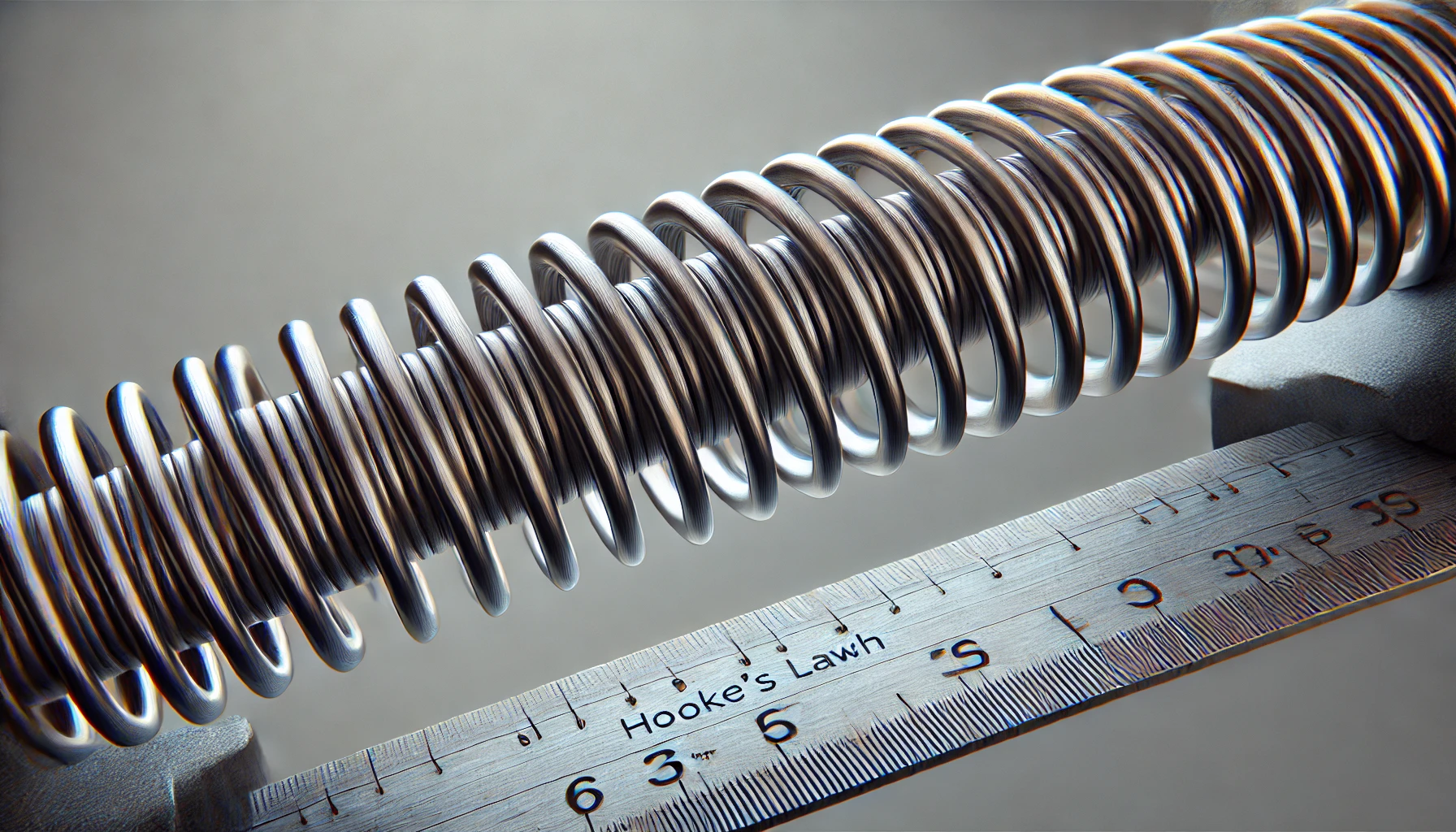Hooke’s Law is one of the fundamental principles of mechanics, describing the relationship between the elastic deformation of a material and the force causing that deformation. Formulated by English physicist Robert Hooke in 1678, this law is essential for understanding the behavior of elastic materials such as springs, beams, and rods. Its application is indispensable in engineering, architecture, construction, and many other fields.
The main premise of Hooke’s Law states: “The deformation of a material is directly proportional to the force applied to it, as long as the elastic limit is not exceeded.” This principle primarily applies to elastic materials, which return to their original shape once the force is removed. Mathematically, it is expressed as:
F = k · ΔxWhere F represents the force, k is the spring constant (also known as the stiffness coefficient), and Δx is the displacement or deformation of the material. It is important to note that this proportionality holds true only within the elastic limit of the material, beyond which permanent deformation occurs.
Hooke’s Law and Springs
For springs, Hooke’s Law relates to the force that stretches or compresses them. Springs play a critical role in everyday devices such as shock absorbers, mechanical clocks, and vehicle suspension systems. The functionality of these devices is based on the proportional relationship between force and spring deformation.
For instance, if the force is 10 N and the spring stretches by 5 cm, the spring constant k would be 2 N/cm. This allows precise calculation of the force required to produce a specific deformation, facilitating the design of devices using springs.
The Elastic Limit
An essential aspect of Hooke’s Law is the elastic limit. This defines the maximum force beyond which a material will not return to its original shape. If deformation exceeds the elastic limit, the material undergoes permanent changes, making Hooke’s Law no longer applicable.
For example, stretching a rubber band until it snaps indicates that the elastic limit has been exceeded. At this point, the deformation becomes irreversible. Understanding the elastic limit is crucial in design to prevent permanent damage to structures.
Applications of Hooke’s Law
Hooke’s Law has widespread applications in engineering and construction. Bridge, skyscraper, and machine designers use this principle to determine how forces cause deformation in structural elements. This knowledge helps predict material behavior under load, preventing failures.
Different types of springs, such as torsion springs, disc springs, and wave springs, are employed in practice. Each type has unique mechanical properties, making the correct choice of spring an essential aspect of device design. Measuring the spring constant in the context of Hooke’s Law enables selecting the appropriate material for specific applications.
Practical Examples
To better understand Hooke’s Law, consider the following example problems:
- Example 1: A spring with a spring constant k = 5 N/cm is subjected to a force F = 20 N. Calculate the spring deformation.Solution: Using Hooke’s Law F = k · Δx. Substituting the values: 20 = 5 · Δx, hence Δx = 4 cm.
- Example 2: A spring with an initial length of 10 cm is stretched by a force 15 N, resulting in a deformation of 3 cm. Calculate the spring constant k.Solution: Using Hooke’s Law F = k · Δx. Substituting the values: 15 = k · 3, hence k = 5 N/cm.
The Effect of Temperature on Deformation
Temperature can significantly impact a material’s elastic properties. As temperature increases, the spring constant often decreases, meaning the material becomes more prone to deformation.
For example, a metal spring in a hot environment may exhibit less resistance to stretching than at room temperature. Designers must account for these changes to ensure safety and durability under varying environmental conditions.
Everyday Applications of Hooke’s Law
In everyday life, Hooke’s Law is applied in many devices. For instance, bicycle shock absorbers use springs to dampen vibrations and ensure a smooth ride. Mechanical clocks rely on mainsprings to store energy necessary for the mechanism’s operation.
Another example is spring mattresses, which provide sleeping comfort by adapting to body shape and supporting different spinal areas. Thanks to Hooke’s Law, we can design devices that are not only functional but also comfortable.
Conclusion
Hooke’s Law is a cornerstone of mechanics that explains the behavior of elastic materials under force. Its applications range from everyday devices to advanced engineering solutions. By understanding the principles of proportionality and elasticity, engineers and designers can create safer and more efficient structures and products.




